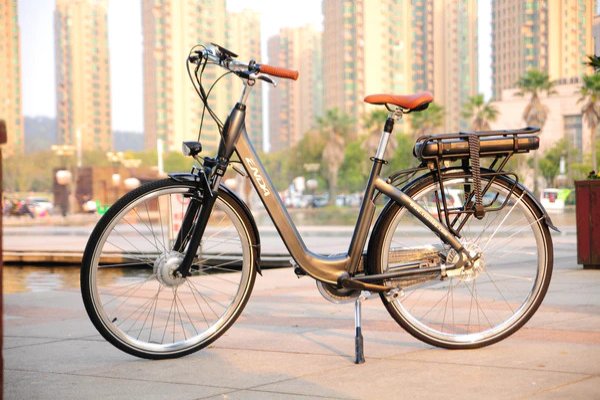Electric bicycles, or e-bikes, have become increasingly popular in recent years, providing a convenient and eco-friendly mode of transportation.
One of the critical components of an e-bike is its battery, which powers the electric motor and provides the necessary range for your rides.
Choosing the right e-bike battery can be confusing and daunting, with various options available.
This article aims to provide a comprehensive e-bike battery buying guide, helping you understand the different types of e-bike batteries, their capabilities, and what to consider when making a purchase.
Types of E-Bike Batteries
E-bike batteries come in several different types, each with its own unique set of pros and cons.
Here are the four main types of e-bike batteries:
A. Lead-Acid Batteries:
Lead-acid batteries, invented in 1800s, are the oldest rechargeable battery type and have been used in e-bikes for many years. They are relatively cheap but also heavy and bulky and have a limited number of charge cycles.
Lead-acid batteries are also not very efficient and have a relatively short lifespan compared to other types of e-bike batteries.
B. Nickel-Cadmium Batteries:
Nickel-cadmium batteries, are type of rechargeable batteries which uses nickel oxide hydroxide and metallic cadmium as electrodes. They are lighter in weight and more efficient than lead-acid batteries. However, are also more pricy.
They are also less widely used in e-bikes than other types of batteries due to environmental concerns with the disposal of nickel-cadmium batteries.
C. Nickel-Metal Hydride Batteries:
Nickel-metal Hydride batteries, are similar to nickel-cadmium batteries but are more environmentally friendly.
They are also comparatively expensive but light in weight and more efficient than traditional lead-acid batteries.
D. Lithium-Ion Batteries:
Lithium-ion batteries are the most widely used type of e-bike batteries due to their high energy density, lightweight, and long lifespan. They are also very efficient but are also the most expensive type of e-bike battery.
Luckily, Lithium-ion batteries contain no toxic metals, so are also more environmentally friendly than other types of batteries. On top of that, they are easy and safe to carry as well as maintain, so they are considered one of the safest batteries for e-bikes currently.
There are three primary types of Lithium-ion batteries:
- Lithium Manganese Batteries
- Lithium Cobalt Batteries
- Lithium-ion Polymer Batteries
Comparison of Different Battery Types
Here is a comparison of the different types of e-bike batteries:
Lead-Acid Batteries:
Pros:
- Cheap
- Widely available
- Simple to recycle
- Tried, tested, and proven technology for decades
Cons:
- Low power output
- Heavy and bulky
- A limited number of charge cycles
- Not very efficient
- Short lifespan compared to other types of batteries
- Two times heavier than nickel batteries and three times heavier than lithium batteries
- Lower capacity per bound than lithium and nickel batteries
Nickel-Cadmium Batteries:
Pros:
- Lighter and more efficient than lead-acid batteries
- More capacity per bound compared to lead-acid batteries
- Longer life than lead-acid batteries
Cons:
- More expensive than lead-acid batteries
- Not as widely used in e-bikes due to environmental concerns with disposal
- Difficult to recycle
- High rate of self-discharge
- Poor density of electricity
Nickel-Metal Hydride Batteries:
Pros:
- Lighter and more efficient than lead-acid batteries
- More environmentally friendly than nickel-cadmium batteries
- Longer service life than NiCd batteries
- Lower rate of discharge than Nickel-cadmium batteries
Cons:
- More expensive than lead-acid batteries
- Generate a lot of heat
- High-level of discharge
Lithium-Ion Batteries:
Pros:
- High energy density
- Lightweight
- Long lifespan
- Very efficient
- Lower discharge rate
- Many discharge cycles
- Environmentally friendly as they contain no toxic metals
Cons:
- Most expensive type of e-bike battery
Factors to Consider When Buying an E-Bike Battery
Choosing the correct e-bike battery can be a daunting task, as there are numerous aspects to ponder.
Here are six key factors to consider when buying an e-bike battery:
-
Battery Capacity:
The battery capacity refers to the amount of energy the battery can store. A higher-capacity battery will allow you to ride further on a single charge, but it will also be costlier and heavier. Choosing a battery with a suitable capacity for your needs is vital.
-
Battery Life:
The battery life refers to the number of charge cycles a battery can undergo before it needs to be replaced. A battery with a longer life will be more cost-effective in the long run but will also be more expensive upfront.
-
Charging Time:
The charging time refers to the amount of time it takes to charge a battery fully. A shorter charging time is more convenient, but it may also increase the cost of the battery.
-
Compatibility with Your E-Bike:
It is vital to ensure that the battery you choose is compatible with your e-bike. Some batteries are designed for specific e-bike models, so it is essential to check with the manufacturer to ensure compatibility.
-
Price and Budget:
E-bike batteries can range in price from a few hundred dollars to over a thousand dollars. It is essential to set a budget and consider the cost of the battery when choosing your e-bike.
-
Environmental Considerations:
Some e-bike batteries contain toxic materials that can be harmful to the environment. It is crucial to ponder the environmental impact of your battery when choosing an e-bike. Lithium-ion batteries are generally the most environmentally friendly option, as they contain no toxic metals.

Maintenance and Care of E-Bike Batteries
Maintenance and care are crucial to ensure the longevity and performance of your e-bike battery.
Here are some critical steps to keep in mind:
-
Charging and Storing Your Battery:
It is essential to follow the manufacturer's instructions for charging your e-bike battery and to store it in a cool, dry place when not in use. Overcharging or undercharging your battery can shorten its lifespan and affect its performance.
-
Keeping Your Battery Clean:
Keeping your battery clean and free from debris is vital for maintaining its performance and preventing any potential damage.
-
Monitoring Battery Performance:
Regularly monitoring your e-bike battery's performance is vital to catch any potential issues early on. Keep an eye on factors such as the range you can achieve on a single charge and how long it takes to charge your battery fully.
-
Replacing Your E-Bike Battery:
Over time, your e-bike battery will begin to lose its capacity and will eventually need to be replaced.
Knowing when it is time to replace your battery is critical to ensure you continue getting the best performance from your e-bike.
Replacing your battery at the right time can also extend the overall lifespan of your e-bike.
The Importance of Choosing the Right E-Bike Battery
Choosing the correct e-bike battery ensures a safe, reliable, and enjoyable riding experience. The correct battery can impact your e-bike's performance, range, and overall lifespan.
A battery with the wrong capacity or compatibility can reduce range, slow charging times, and decrease performance.
On the other hand, choosing a high-quality, reliable battery that is well-suited to your needs can enhance the performance and efficiency of your e-bike, allowing you to enjoy longer rides with less worry about running out of power.
Additionally, considering factors such as the battery's price, lifespan, and environmental impact can help you make an informed decision that meets your specific needs and aligns with your values.
Conclusion:
Following this e-bike battery buying guide, you can make an informed decision and choose the right battery for your e-bike, ensuring you enjoy a safe, reliable, and eco-friendly ride for many years.





